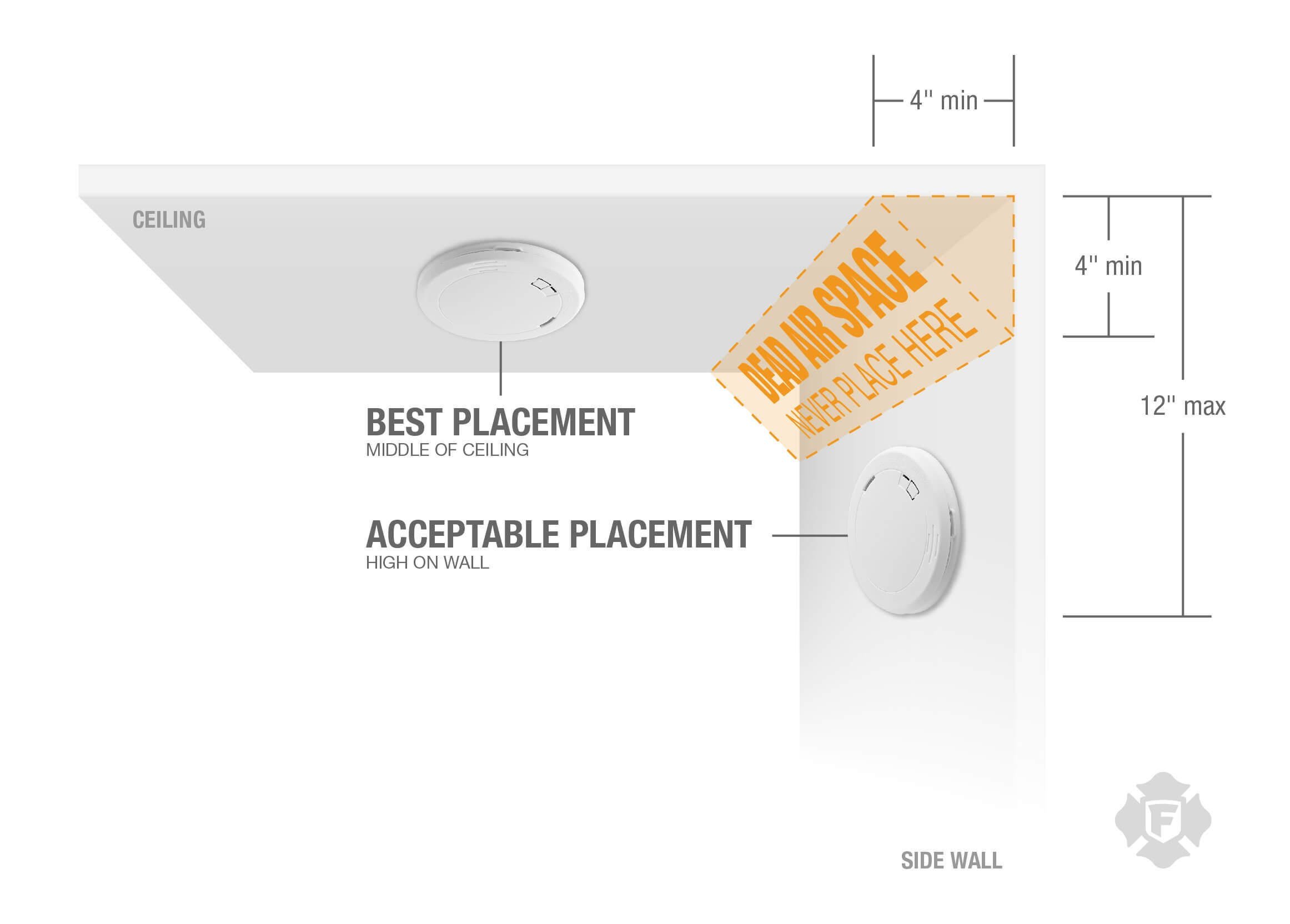5 Smoke Alarm Safety Tips

1. Install Smoke Alarms to Help Protect Your Home and Family
Fire is a deadly threat to any household. It can strike anywhere, at any time so it is important that you and your family are prepared. Smoke alarms help provide early warning in the event of a fire in your home. The National Fire Protection Association (NFPA) recommends smoke alarms be installed on every level of the home, inside every bedroom, and outside each sleeping area. In the basement, smoke alarms should be installed at the bottom of the stairs leading up to the next level. Learn what your state’s requirements and regulations are for home smoke alarms by using our interactive state legislation map.
2. Placement of Smoke Alarms is Important
Mount smoke alarms in the middle of the ceiling when ceiling mounted. If that is not possible, mount detectors on the wall at least three feet away from a corner and within 12 inches from the ceiling. Keep smoke alarms away from drafts created by fans or air ducts. The moving air can blow smoke away from the sensor on the alarm. Avoid placing fire alarms too close to the kitchen stove and bathroom shower, as cooking smoke and shower steam can cause nuisance alarms. If you do install a smoke alarm in the kitchen, ensure it is at least 10 feet away from any cooking appliances to help avoid false alarms.

3. Maintain Your Smoke Alarms to Help Ensure They Are Functioning Properly
The NFPA recommends testing your smoke alarms at least once a month to ensure they are working and replace the batteries every 6 months or if a low battery chirp occurs. When replacing batteries, follow the user manual which includes a full list of approved batteries for your alarm. Smoke alarms should also be replaced at least every 10 years. Fire alarms with a 10-year sealed battery should be replaced after 10 years and when the end-of-life warning occurs.
4. Choose the Right Smoke Alarm for Your Needs
There are different types of smoke alarms including battery, 10-year sealed battery and hardwire. All are effective at detecting smoke and fire, but the type of alarm you choose will depend on your home and family’s needs.
Battery Alarms: Battery-operated fire detectors can be easily installed with no wiring required. Maintenance includes changing the batteries every 6 months and testing the alarm monthly to ensure they are working.
10-Year Sealed Battery Alarms: Ten-year alarms are also battery powered and can be installed with no wiring required; however, no battery replacements are required for the life of 10-year sealed battery alarms!
Hardwire Alarms: Hardwired smoke alarms wire directly into your home’s electrical system. Many of our hardwire fire alarms also have a battery backup for continued protection during power outages.
5. Have a Plan Prepared if the Smoke Alarms Sounds
Never ignore the sound of the smoke alarm. If the smoke alarm is sounding, there is a reason. You and your family must be able to escape quickly and safely. Here are several safety tips your family can learn and practice to prepare for an emergency:
- Have a safety escape plan. Discuss and practice your emergency escape plan as a family. Know two exits from any room in the house.
- Feel if the door is hot. Always feel the door to see if it is hot before opening it to escape. If the doorknob or door is hot, do not use that exit. Use your alternate exit to escape.
- Crawl on the floor. Smoke from a fire rises and so does the temperature. If you crawl on the floor, the smoke and the heat from the fire will be less severe.
- Meet at a designated spot outside the home to help know who has escaped.
- Call the fire department once safely outside. Be prepared to give your full name and address to the operator at the other end of the line. Stay on the line until the operator has the information needed.
- Do not return or go inside a burning building until cleared by the fire department.